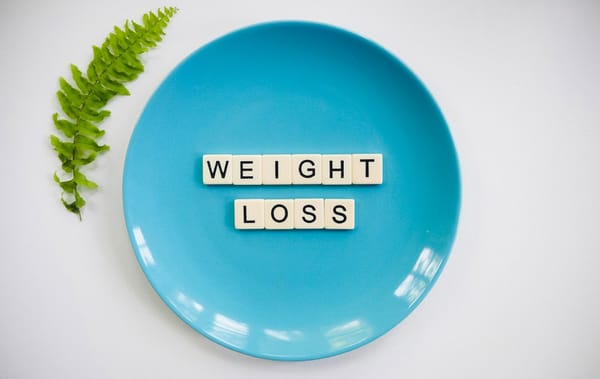TDEE and Blood Sugar Control: Balancing Your Calories for Stable Energy Levels

Blood sugar is another element in the many aspects of total health that corroborate one's energy, mood, and mental sharpness. It has a lot to do with how you manage your TDEE each day to keep your blood sugar under control over the same period. Hiccups in blood sugar, either from eating too much or not enough, lead to energy crashes, irritability, and consequently, long-term issues like diabetes.
This article will explore the relationship between TDEE and blood sugar composition, while also offering practical tips on maintaining stable energy levels towards supporting overall metabolic health.
TDEE Relative to Blood Sugar Regulation
TDEE is the number of calories your body needs in one day to support all its functions. It consists of:
- Your Basal Metabolic Rate: The basic functions of the body, such as breathing and maintaining body temperature.
- Thermic Effect of Food: The energy consumed in the digestion and absorption of a food.
- Physical Activity Level: The energy burned each day during exercise and general body movements.
- Non-Exercise Activity Thermogenesis: The energy expended in activities like walking, standing, and even fidgeting.
Calibrated with Total Daily Energy Expenditure, blood sugar is anytime disrupted by food intake and low-calorie consumption. Insulin has a very key action; it drives down blood sugar levels after a meal by helping glucose enter cells. In fact, glucagon exerts the opposite action by helping glucose leave from storage for the body's use when levels are low.
When a person is constantly eating more than they should; the body goes finished with sugar and hence blood sugar jumps high. Meanwhile, on the other hand, if a person eats too little or skips a meal, this can result in low blood sugar, fatigue, dizziness, and irritability.
TDEE Impact on Blood Sugar Control
Insulin Sensitivity and TDEE
When one obtains their calorie requirements right as per TDEE, insulin sensitivity within the body tends to be at its most. It is in such cases that the body's cells react properly to insulin for blood sugar regulation. However, should the person overweight or underweight, their insulin sensitivity might then low, coupled with their emitted blood sugar level heightened subsequently making them more prone to insulin resistance.
Meal Time and Blood Sugar Spikes
When one ingests excess calories than the body requires during the active day, particularly in sugars, spikes in blood levels occur. In such cases, the body secretes large doses of insulin, which in turn will set the patient up for sometimes very low blood sugar that can leave the body weak on their feet or edgy. Aligning TDEE to energy needs can good way to avoid falling into such blood sugar-related traps easily.
How to Balance Your TDEE for Stable Blood Sugar
Choose Balanced Meals with Complex Carbs
Include complex carbohydrates in meals: whole grains, vegetables, and legumes. They release glucose gradually, helping to buffer blood sugar spikes. Involving proteins and good fats in the meal will even slow sugar absorption more to prevent spikes and crashes. Good examples are meals of quinoa with chicken and mixed vegetables or a wholegrain wrap with lean turkey and avocado.
Monitor Your Caloric Intake
Match the daily caloric intake with TDEE to help with stable blood sugar. If overloading, think about jack-up the portion method while focusing on quality-eating. If undereating, ensure enough intake allows energy production without dipping enough to cause hypoglycemia.
Avoid High Sugar Snacks
Packed with simple sugars, candies, sodas, and pastries offer a rapid spike in blood levels post-ingestion. This might bring about occasional indulgence. Still, it's important to avoid the daily habit of such foods if blood sugar level problems are an issue. Better alternatives are whole fruits, nuts, and some yogurt.
Include Protein with Every Meal
Protein also does a good job in helping manage blood sugar through slowing glucose absorption, while at the same time offering a good feeling of satiety thus curbing munching. This support can be given with lean proteins from chicken, fish, eggs, tofu, or legumes at every meal.
Practice Portion Control
Portion control although practiced might do away with almost all blood sugar-spiking habits cultivated through stuffing oneself on just about anything—even healthy food.
Stay Active
Exercise is by far one of the best methods of improving insulin sensitivity and blood sugar control. Regular physical activity enables the muscles to take up glucose without the need for too much insulin. So, it is recommended that each person be able to participate in at least moderate levels of physical activity—such as brisk walking, cycling, or swimming—totalling up to about 150 minutes each week.
Meal Skipping
With meals skipped from the routine, blood sugar could drop further low, leading to hypoglycemia. Regular consumption of meals that go with your TDEE helps in regulating blood sugar dips, hence giving you a constant supply of energy throughout the day.
Symptoms of Imbalanced Blood Sugar and TDEE
Fatigue and Irritability
Sudden shifts in blood sugar levels can leave one feeling low and irritable. Hence, signs of caloric imbalance could be the same.
Cravings: Always Hungry
Major craving-reducing factors in dealing with blood sugar imbalance include constant thirst and continuous urination. When blood sugar rises, the body hopes to excrete excess sugar through urination, leading to dehydration and consequently increased thirst. Keeping your TDEE in check through balanced meals will avoid these symptoms.
Use: Total Daily Energy Expenditure Calculator
Through managing the TDEE, blood sugar can be more readily stabilized to also avoid huge negative effects that draws sugar back into the body. It is by first placing caloric intake to meet the energy needs of the body and then focusing on achieving balance in nutrients through meals that one is ready to go with blood leads, pretty much the same level as air for life all over.
In terms of improvement for conditions or energy management, long-term problems like diabetes, TDEE pretty much sums up to the guidance system about what it does to maintain a balance in blood sugar.



